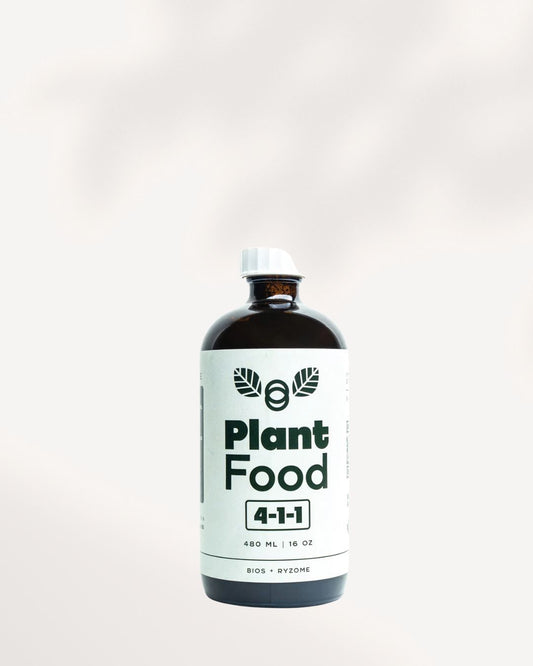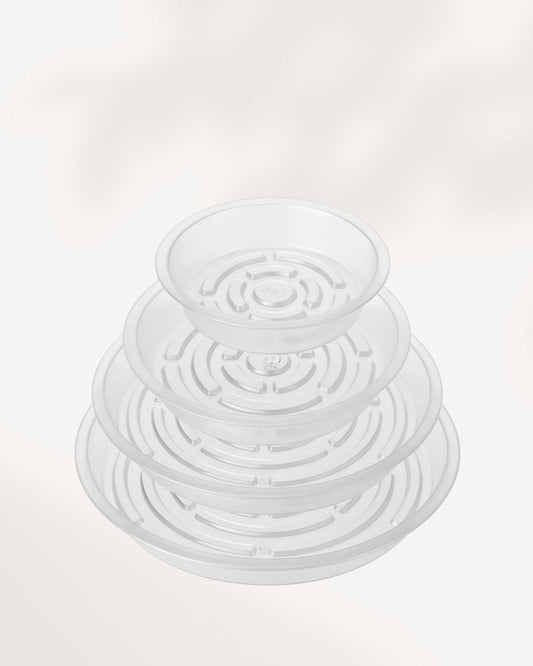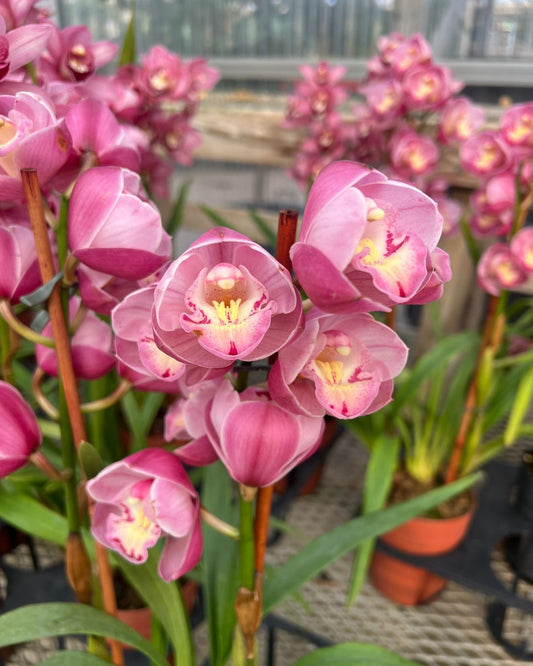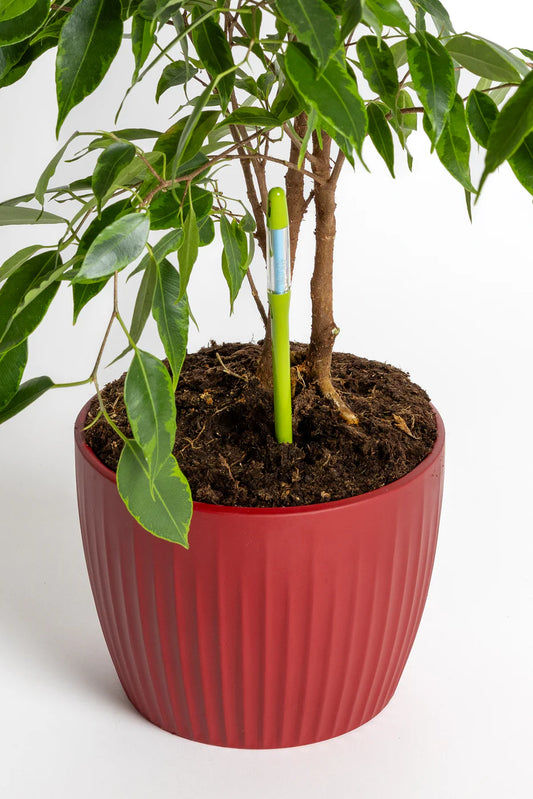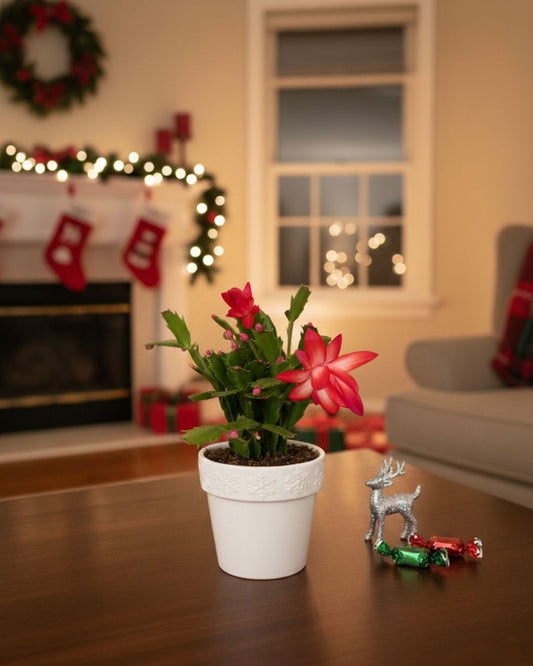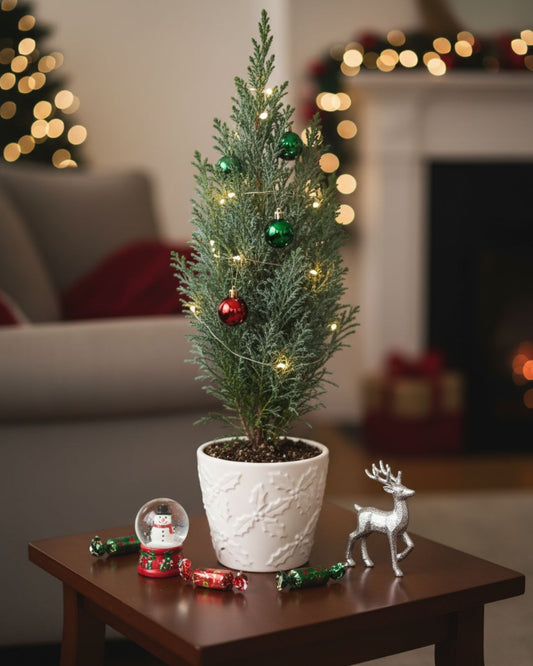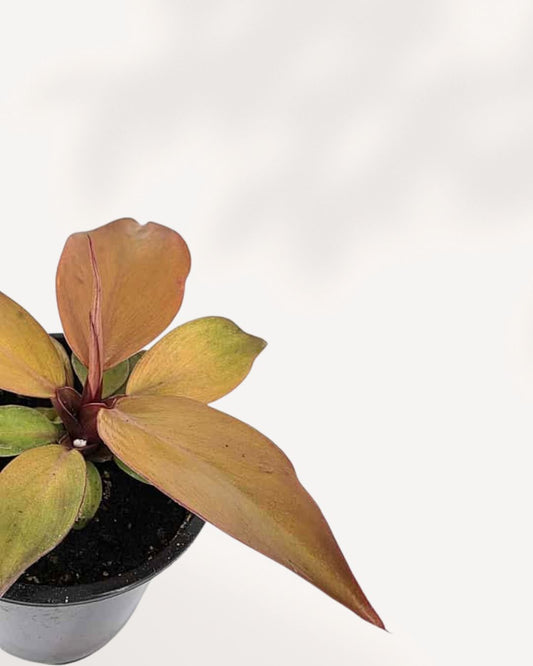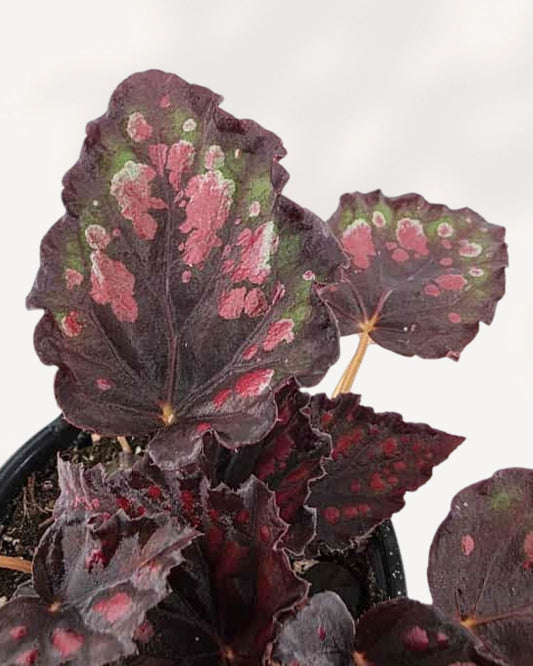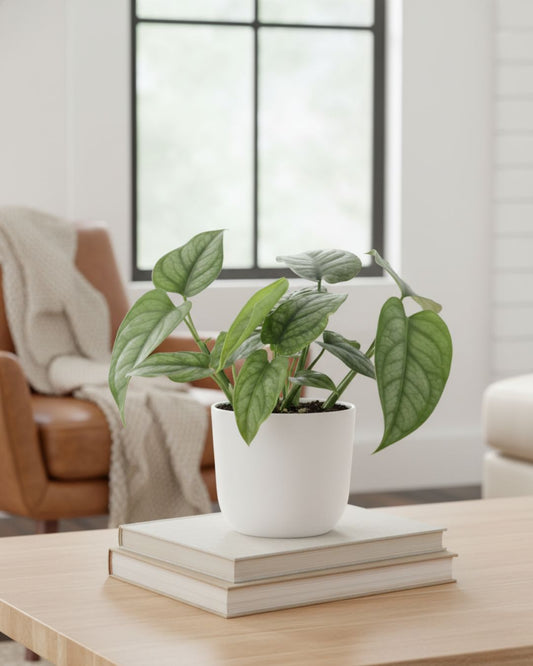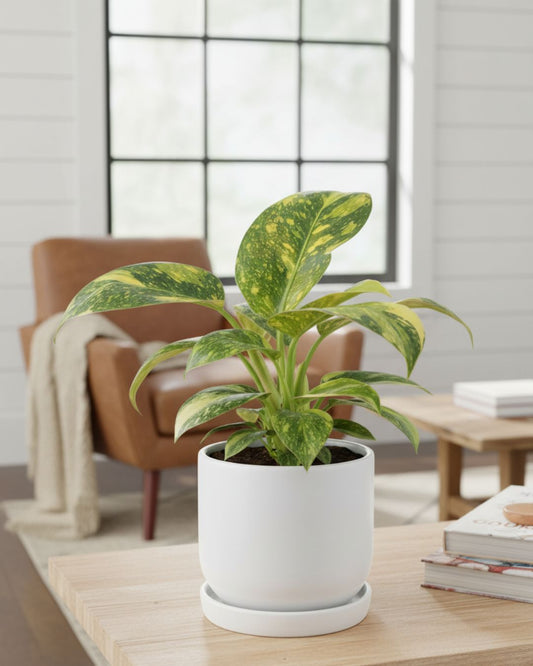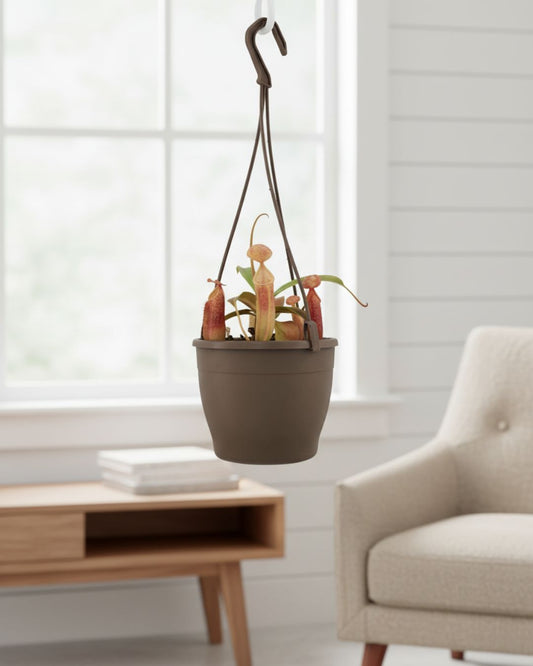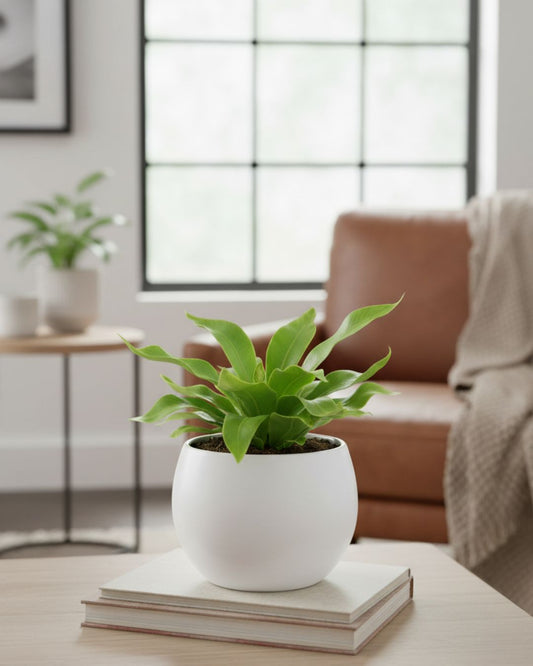How to care for Ficus Plant
| Back to Library |
Quick Care Overview
| Care Aspect | Details |
|---|---|
| Light | Bright, indirect light; tolerates some direct sun. Learn More |
| Water | Water when the top 2-3 inches of soil are dry. Avoid overwatering. |
| Soil | Well-draining potting mix with peat and perlite. Shop Potting Mix |
| Temperature | 60–75°F (16–24°C); avoid cold drafts. |
| Toxicity | Mildly toxic to pets if ingested. |
Ficus Plant Care Guide | Growing, Watering, and Propagation Tips
Learn how to care for your Ficus plant with expert tips on watering, light, soil, and propagation. Perfect for homes and offices!
Common Names
- Fiddle Leaf Fig (Ficus lyrata)
- Weeping Fig (Ficus benjamina)
- Rubber Plant (Ficus elastica)
- Fig Tree
Native Habitat
Ficus plants are native to tropical and subtropical regions worldwide, thriving in warm, humid environments with indirect sunlight.

Uses and Popularity
Ficus plants are popular for their attractive foliage and air-purifying qualities, making them a favorite choice for both modern and traditional interior decor.
Ficus Plant Care Guide
Light Requirements
Ficus plants thrive in bright, indirect light. Too much direct sunlight can scorch the leaves, while too little light can cause leaf drop. Learn more about light requirements.
Watering Needs
Water your Ficus when the top 2-3 inches of soil are dry. Reduce watering during winter months to prevent overwatering.
Soil Preferences
Use a well-draining potting mix with peat, perlite, and pine bark. Shop Indoor Potting Mix
Temperature & Humidity
Ficus prefers temperatures between 60–75°F (16–24°C) and benefits from increased humidity. Avoid cold drafts and sudden temperature changes.
Fertilization
Feed your Ficus monthly during spring and summer with a balanced liquid fertilizer. Reduce feeding during fall and winter. Explore Natural Fertilizers
Pruning & Maintenance
Regular pruning helps maintain shape and encourages growth. Clean leaves with a damp cloth to keep them healthy.
Propagation Tips
Stem Cuttings
Propagate Ficus by taking healthy stem cuttings and placing them in water or moist soil until roots develop.
Air Layering
For larger Ficus varieties, air layering is an effective method of propagation, promoting root growth while still attached to the parent plant.
FAQs
Why are my Ficus leaves dropping?
Leaf drop can result from overwatering, sudden temperature changes, or insufficient light. Adjust care accordingly.
Is Ficus a good indoor plant?
Yes! Ficus plants are excellent indoor plants, purifying the air and adding lush greenery to any space.
How often should I repot my Ficus?
Repot every 2-3 years or when the plant outgrows its pot. Choose a slightly larger container with proper drainage.
The Positive Impact of Plants
-
Plants and Healing
Working with plants soothes the mind. It feels calming and healing, offering a peaceful break from daily life.
-
Plants for Recovery
Being around plants can speed up healing from sickness, making you feel better quicker in a natural way.
-
Plants and Work
Plants in your space may make your work better and faster, enhancing focus and creativity during tasks.
LETTING CUSTOMERS SPEAK FOR US!
Shop by Feature
FAQs for Plant Delivery in Ontario & Quebec
What types of house plants do you offer for delivery.
We offer a wide variety of houseplants for delivery. Here are some of the popular options: Aglaonema, Alocasia, Calathea, Hoya, Monstera, Palm, Peperomia, Philodendron, Pothos, Sansevieria Snake, Syngonium, Tradescantia.
What is the lifetime support?
All plants purchased from our store or through our workshops come with lifetime support. This means that whenever you have questions or concerns about your plant, we're here to help. Whether you're unsure about your plant's health or need advice, we can assist in identifying problems, answering your questions, and potentially saving your plant. Feel free to reach out to us on Instagram @mygreenscapeto or via email at support@mygreenscape.ca.
Where do Mygreenscape plants come from?
Our plants embark on a journey from various greenhouses across Canada. We prioritize short delivery routes to ensure your plant arrives happy, healthy, and full of vitality.
Do I have to repot my plants once they arrive?
Absolutely not! When your plant arrives, give it time to settle into its new home. Place it in the desired spot, and let it acclimate for about two weeks.
Favorite in our plant shop
-
Liquid Plant Fertilizer
Regular price From $30Regular priceUnit price per -
Plant Saucer
Regular price From $2Regular priceUnit price per -
Cymbidium Orchid
Regular price $89Regular priceUnit price per -
SUStee Soil Moisture Indicators
Regular price From $12Regular priceUnit price per -
Christmas Cactus
Regular price $12Regular priceUnit price per -
Ellwoodii Cypress
Regular price $18Regular priceUnit price per -
Philodendron 'McColley's Finale'
Regular price $15Regular priceUnit price per -
Begonia Rex 'Harmony Stained Glass'
Regular price $15Regular priceUnit price per -
Monstera Siltepecana
Regular price $15Regular priceUnit price per -
Philodendron Green Congo Nuclear
Regular price $45Regular priceUnit price per -
Nepenthes Sanguinea Pitcher Plant
Regular price $35Regular priceUnit price per -
Cobra Fern
Regular price $18Regular priceUnit price per
MyGreenScape is your go-to online shop for indoor plants in cities Ontario or Quebec, including Toronto, Montreal, and many more. Our mission is to add joy to your home, one leaf at a time. Explore our range of beautiful, air-cleaning plants from the comfort of your home. You can find beautiful indoor plants, pots for plants, garden tools, and hanging basket plants all in one spot. Our mission is to add joy to your home, one leaf at a time.
Buying plants online with us means no more carrying heavy pots or figuring out how to get big plants home. We deliver straight from the gardener to you, with eco-friendly packaging, across Ontario and Quebec. Expect your new green friends within 2-7 days.
Why choose MyGreenScape? Here’s why:
- Lifetime Support: We’re here for you always. Get all the help you need for your plants to flourish.
- 30-Day Happy Plant Guarantee: Not happy with your plant? Tell us within 30 days, and we’ll fix it.
- Easy Delivery: Fast, direct to your doorstep in Ontario or Quebec.
Hear from a happy customer, Sarah T.: "Buying plants was never easier. Quick, simple, and with great support from MyGreenscape."
Ready for easy, stress-free plant shopping? Visit us now and make your home greener. Join MyGreenScape for a hassle-free way to bring nature inside.



















